I’ve never had such a good look at a fledgling Short-eared Owl as I did yesterday morning. At this stage they look quite different from the adults.
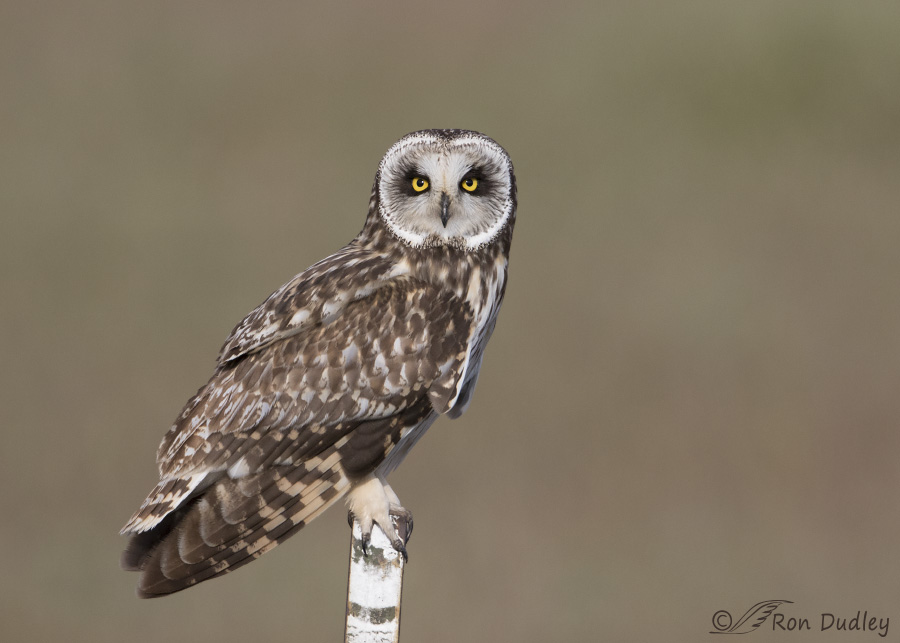
1/2500, f/6.3, ISO 800, Canon 7D Mark II, Canon EF 500mm f/4L IS II USM + 1.4 tc, not baited, set up or called in
But first here’s a typical adult for comparison’s sake. I photographed this bird three days ago in the same area of northern Utah where I found the fledgling yesterday. In fact it’s possible that this bird is one of the parents, though there are many Short-eared Owls in the vicinity.
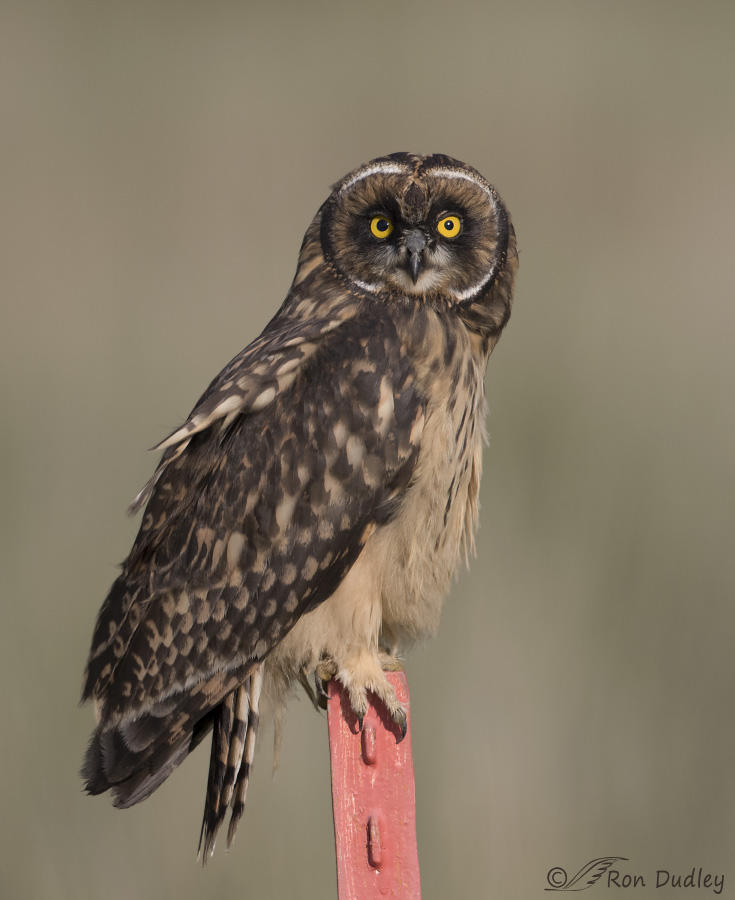
1/4000, f/5, ISO 500, Canon 7D Mark II, Canon EF 500mm f/4L IS II USM, not baited, set up or called in
And this is the fledgling, photographed yesterday morning on a painted metal fencepost right next to the remote road. Notice how dark the owlet is compared to an adult – particularly its facial disc.
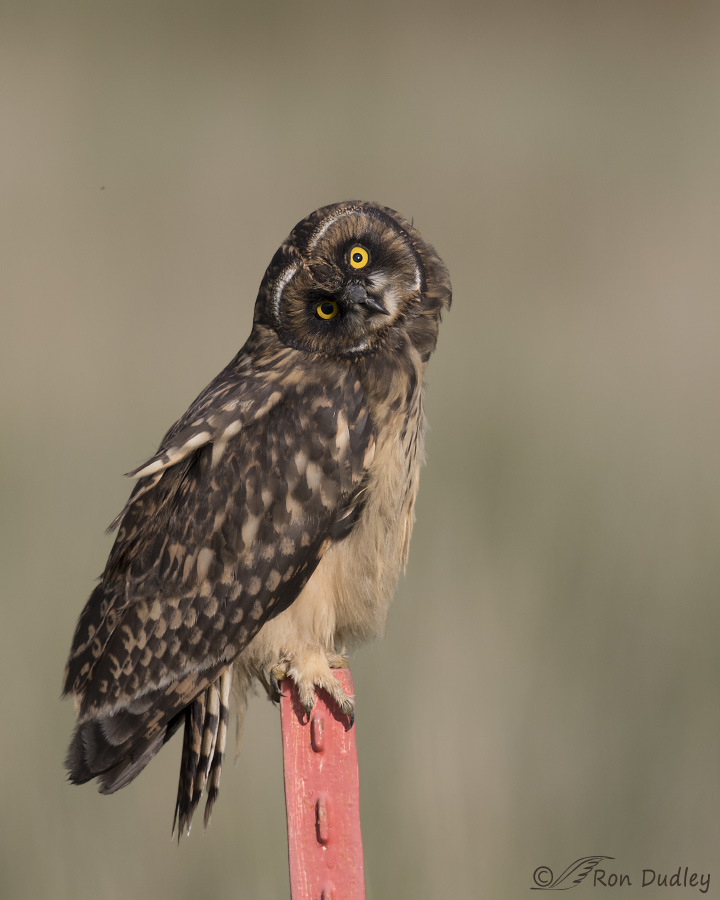
1/3200, f/5, ISO 400, Canon 7D Mark II, Canon EF 500mm f/4L IS II USM, not baited, set up or called in
Typical of many owls at this stage the youngster had no fear of me or anything else including the occasional vehicle and a lady on a bicycle who rode between me and the owl at least a dozen times during the time I spent with the bird. She was apparently getting her morning exercise – back and forth, back and forth, ad infinitum…
Here the bird was parallaxing on the sound of my shutter, first in one direction…
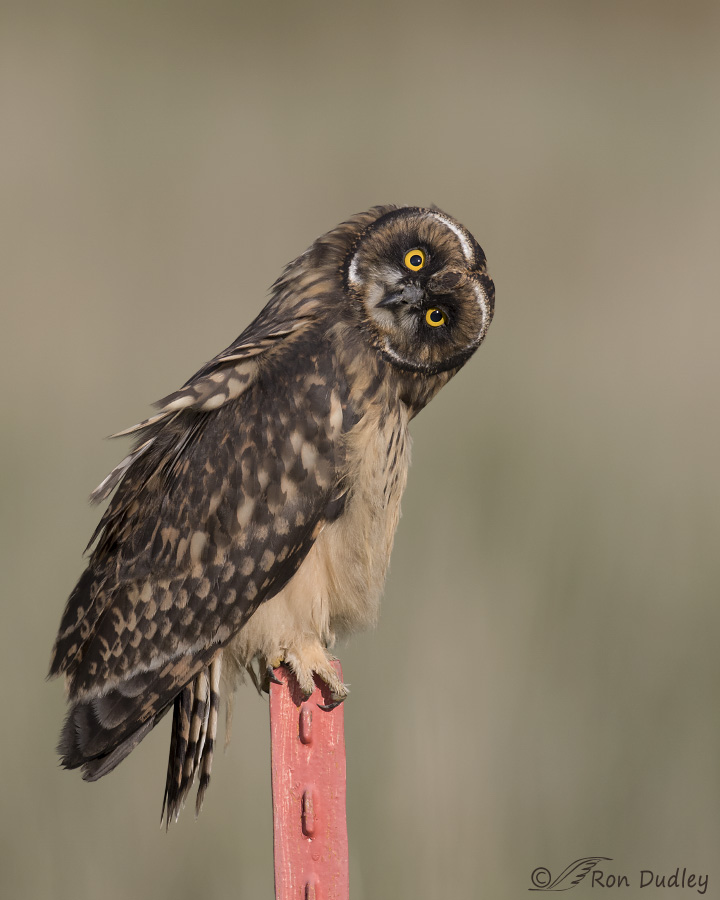
1/3200, f/5, ISO 400, Canon 7D Mark II, Canon EF 500mm f/4L IS II USM, not baited, set up or called in
and then in the other.
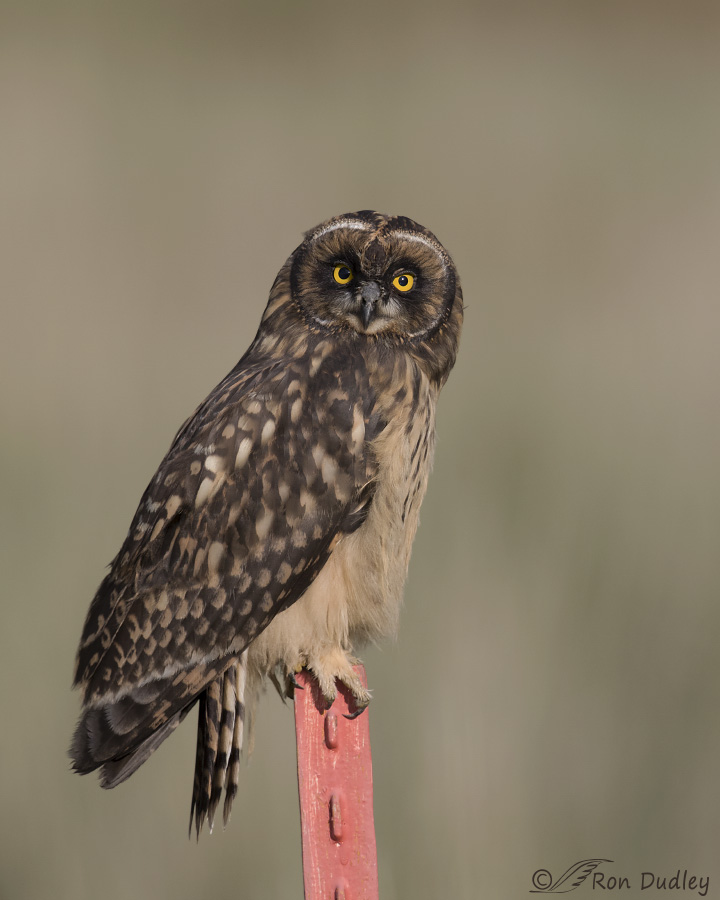
1/4000, f/5, ISO 400, Canon 7D Mark II, Canon EF 500mm f/4L IS II USM, tc, not baited, set up or called in
Though this owl didn’t give me many poses its face was amazingly expressive – here it seems to be giving me an impertinent look
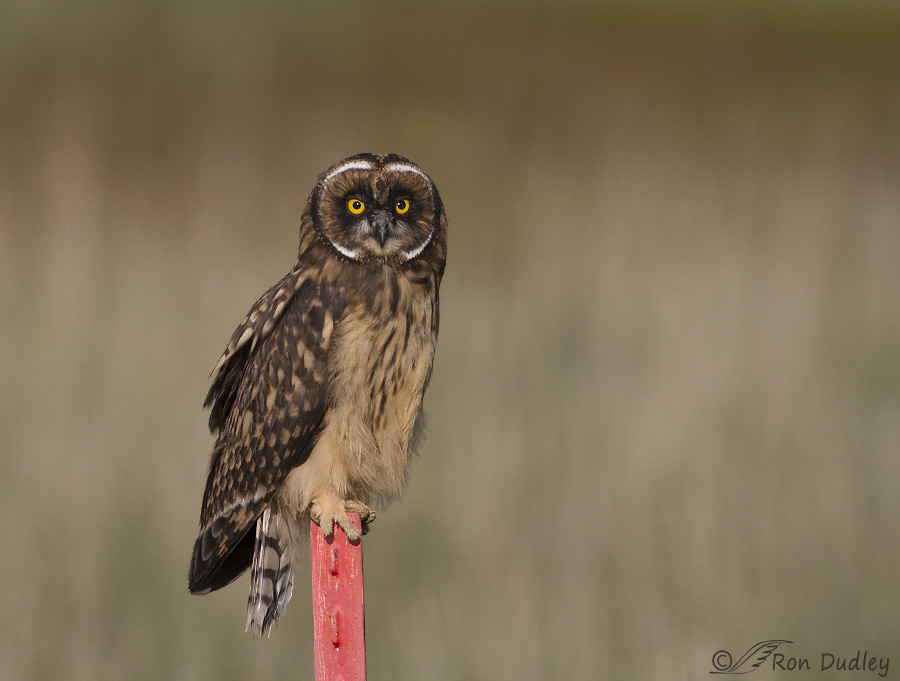
1/3200, f/6.3, ISO 500, Canon 7D, Canon EF 100-400mm f/4.5-5.6L IS II USM, not baited, set up or called in
And in this image the bird looks vulnerable (which it is) and forlorn – all of which may be anthropomorphic on my part but I thought the apparent expressions were endearing.
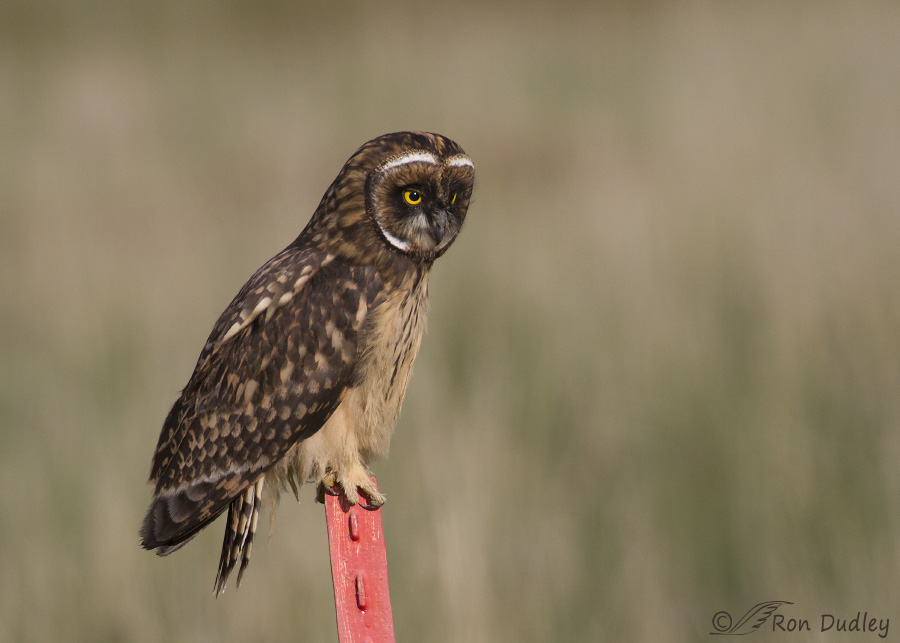
1/4000, f/6.3, ISO 640, Canon 7D, Canon EF 100-400mm f/4.5-5.6L IS II USM, not baited, set up or called in
This owl has left the nest and can fly (otherwise how did it get to the top of the post?) and its hunting instincts were apparent. Several times it looked intently at the grasses near the road where it had apparently seen or heard voles or other potential prey.
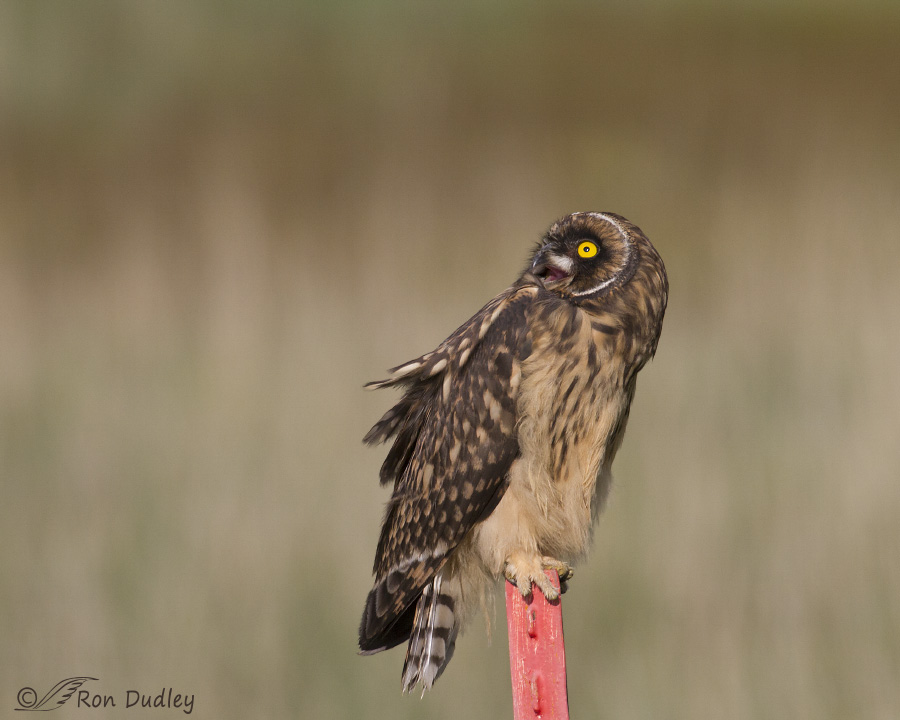
1/2500, f/6.3, ISO 500, Canon 7D Mark II, Canon EF 500mm f/4L IS II USM + 1.4 tc, not baited, set up or called in
At one point it looked up into the sky and called out. I wondered if it had seen one of its parents in flight (shooting from my pickup I couldn’t look in that direction). It’s possible that the parents may still be supplementing it with food so I soon left the area with the owl still perched on the post. When I returned approximately an hour later it was gone.
Short-eared Owls are abundant in northern Utah this spring and I’m delighted about that because they’ve been few and far between in recent years.
Ron
Note: I never disturbed this vulnerable young bird. I stayed in my pickup and photographed it from the opposite side of the road. I paid very close attention to its behavior and it never showed any sign of nervousness with my presence. One big noisy truck came roaring by at about 50 mph and within about 10′ of the owl and it didn’t even flinch, though it did watch the truck as it passed. For their own safety I actually wish these young birds were a little more skittish…


One has to love the face of an Owl. You captured their faces so well. Great job Ron!
Hi Ron, I don’t write long comments after seeing your entries but I want you to know I am in AWE with each pic you post and every story you write!! Know that I appreciate your blogs and I learn from you!! Don’t EVER stop!
 Linda Covey
Linda Covey
I don’t plan on stopping soon, Linda. Thanks for the encouragement!
What an absolute charmer. Heart melting, endearing, and all the other superlatives…
And huge (and deserved) congratulations about the National Geographic Children’s book.
Thank you, EC. I may post something about that book when I get it.
Looks like another species…
I had the same thought, Patty.
Wonderful series, Ron! I only see the adults in winter- at dusk in waning light- so it’s a delight to see this beautiful fledgling. Thanks again!
Thank you, Diane.
Great shots.
Thanks, Earl.
Having never seen one of these beauties close up, this is a treat. My first thought when I saw the fledgling was he looked like he was wondering “what the heck have I gotten myself into”. His eyes seemed so wide eyed and looked maybe a little overwhelmed. Maybe it’s just the mother in me!
Carol, I think the bright eyes of young birds are especially striking set against that dark face the youngsters have.
OMG, Ron – this is a spectacular series!! The fledged Juvie Short Eared Owl is just AWESOME with his gorgeous coloring – so much darker than the parents. All his facial expressions and your comment for each made me laugh but as you said makes me worry for it’s safety. I know the numbers for bald eagle juvies is a high death rate in their 1st year so I know your concern for this beautiful fledgling is very real. Don’t Do you know hat the current survival rate for is these owls?!
OMG what us mess the computer & I made of my last sentence!! Let me try it again – Do you know what the current survival rate is for Short-Eared Owls?!
“Do you know what the current survival rate is for Short-Eared Owls?”
I’m afraid I don’t, Jo Ann. But speaking of mortality I noticed a road-killed adult this morning that wasn’t there yesterday. I imagine a lot of them are killed in collisions with vehicles, juvies especially.
This fledgling is one beautiful bird. I love the facial expressions, and agree with your assessment of them, anthropomorphic or not. The expressions remind me of a lot of your photos of Burrowing Owls. All of them tend to look a bit goofy when parallaxing.
“All of them tend to look a bit goofy when parallaxing”.
They sure do, Susan. I saw one of them doing it again this morning but to a lesser degree.
What a JOY to wake up in the morning and read your articles with those spectacular images
Thank you
Thank you for the nice comment, Carlotta.
Again, the obligatory comment on just how spectacular your photos are. I mean, really! You make outrageously beautiful photos–and yes, I know about the culls, but still, the masterpieces are in there. You really need to submit some of these shots to places like National Geographic (and others)!!
And what a lovely young owl, so inquisitive. I love the detail of the uneven/ruffled trailing edges of their flight (wing) feathers that creates silent flight. What a cool adaptation for hunters who need stealth!
Knowing nearly nothing about this species, I wonder whether the darker feathers are a) indicative of a dark morph of b) just juvenile plumage, normal for all juvenile short-eared owls?
As for the anthropomorphism, I think it works pretty well as long as you yank the anthro part out of it. In short, if it looks like a duck, waddles like a duck, quacks like a duck and has feathers like a duck, it’s a duck! HOWEVER, that duck doesn’t need/want a sweater, booties or a comforter during the winter (<– one of many examples of the anthro part).
Laura, all the young owls I’ve seen are darker than the adults but some of them don’t have such a dark face as this one. This morning I saw one with a pretty light face.
Regarding National Geographic, I actually have one of my photos in one of their new children’s books that is being published this month. I don’t have my copy yet though.
YAY for YOU Ron (children’s book)!!! Your photos are just stunning and the behavioral stuff is outstanding, too. Keep sending stuff out! Seriously, your work ROCKS!!!
Truly amazing shots Ron! I will never see anything close to the shots and I appreciate you’re sharing!
Charlotte
I’m glad you enjoyed them, Charlotte. Thank you.
I love she shots you took, tilted head, priceless.
Thanks, Eileen.
Cool! We have 3 Great Horned Owl fledglings just out of the nest at the moment that are hopping around and “observing” their world from various positions. They are fun to watch and listen to as they intently try to get the adults attention. They are a challenge photography wise due to low light. The Short-eared are at least out during the day!
Judy, When SEO’s are raising chicks around here they seem to be out hunting most of the day. Pretty neat to be able to watch them.
I’ve never seen a fledgling Short-eared Owl before, so thank you. Top notch pics as always. I thought these birds migrated to the far north for the winter. They’re here in upstate NY from Jan-Mar (approximately)…and then they’re gone. I wonder what it is about Utah vs. NY that causes them to act differently?
I’ve heard other folks say the same thing about the SEO’s in the northeast states, Zaphir. I don’t know the reason for the difference but we sure have a lot of them breeding around here right now.